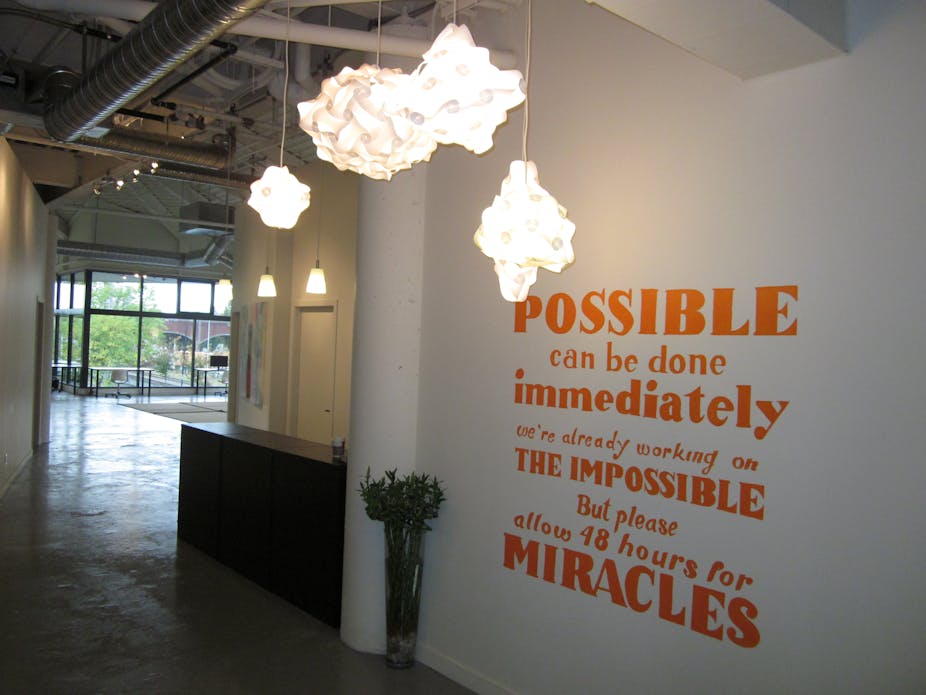A quick scan of recent media highlights an entire industry exists around workplace happiness. Being a corporate happiness expert is now a job title.
As part of this effort, billions of dollars are spent annually on workplace design. We are inundated with images of workplaces with brightly coloured lounge spaces, nap pods and collaboration zones with coffee grinders and free wholefoods for staff. Mouse pads and walls in meeting areas are plastered with affirmations and reminders of utopian corporate visions.
It appears however that the struggle to create meaning and happiness at work appears no closer to being resolved. Research by Gallup shows that up to 70% of the workforce is disengaged costing US$500 billion annually in lost productivity.
The quest for happiness at work has reached a point where appearing unhappy can cost your job. Where once there existed an unspoken aim to remove the bottom 10% of performers, some organisations now recommend sacking the least happy 10% of workers.
Not all worthwhile outcomes are achieved from a place of smiling bliss. The pursuit of innovation for example is a lengthy process requiring tenacity, resilience and many ups and downs along the way. Just ask the founder of any startup.
The pressure to be happy and productive has meant that many employees feel uncomfortable expressing how they really feel. Disagreeing with ideas may see you labelled as difficult to work with and can be a career limiting approach. Additionally, research has shown an overemphasis on cohesiveness and “cultural fit” can lead to a lack of diversity in the workforce, as well as groupthink.
Groupthink, the drive for consensus at any cost, can result in even the most intelligent people making decisions with tragic results. Empirical studies have shown groupthink contributing to events including the Bay of Pigs invasion and the Challenger disaster.
A new book by William Davies suggests that this pursuit of happiness has led technology being used to instigate a new form of Taylorism, the scientific management movement of the early 1900’s. Davies suggests that workers are increasingly not trusted to identify and manage their own feelings.
Instead of voicing concerns and encouraging healthy debate, Davies says organisations are increasingly likely to be given a tool that will monitor their facial muscles or a survey that says “How do you feel on a scale of 1 to 10?”. A recent article reported the use of brain monitoring technology that scans brainwave patterns and alerts workers when they are falling asleep. Workers wear a cap that monitors up to 13 types of information including movement. While such wearable technology can have positive safety benefits in high risk industries such as mining, a survey by PWC has found 82% of employees were concerned as to how the information would be used.
As Davies suggests, we are at risk of discrediting the experience of what it means to be human. Instead of taking the time to ask “why do you feel like that”, we’ve become obsessed with trying to make everyone feel good all the time assuming it leads to better outcomes for the organisation.
With many employees reporting they are staying in touch with the workplace up to 16 hours a day, it’s unrealistic and unhealthy to expect people to be happy for this length of time on a daily basis. Given that 70% of employees are disengaged, organisations need to be encouraging conversations that uncover the causes of the issues.

